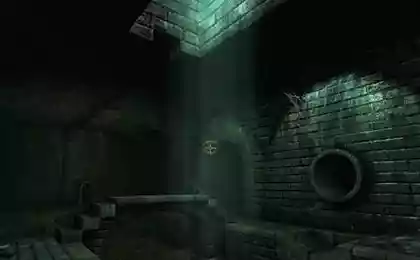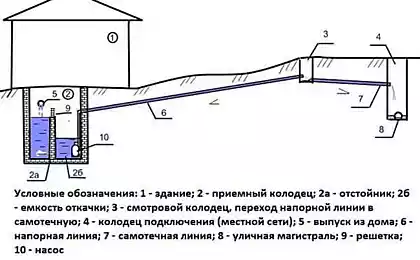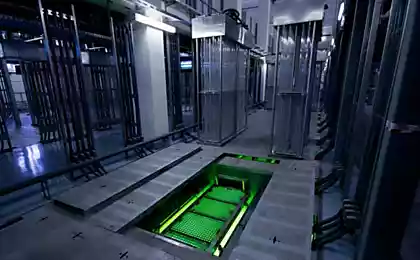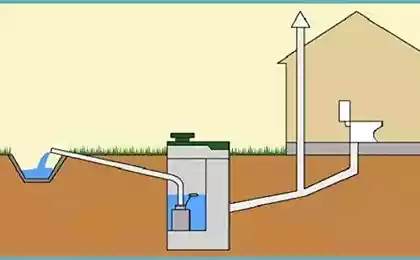480
Drinking water from sewage - does it really?
The idea of using treated wastewater as drinking water certainly lead someone to confusion. But after the lake level fell below 40% of its capacity, as on Tuesday, once resulting from the oil boom, the city of Wichita falls in Texas is preparing to implement a controversial technology. Using, according to the authorities, security technology and secondary use of water as suitable for drinking, the city expects to produce 5 million gallons (19 million liters) of water daily.
“When we first discussed the projects secondary water use in the late 90s, it may have been a lot of comments,” says mayor Glenn Barham. Now, in drought conditions, he said, people “realized that we have to take steps to stabilize our water supply”.

Wichita falls is one of several cities in Texas, educational projects secondary use of water. This spring, the station for $14 million in the town of big spring in West Texas will recycle treated sewage water into drinking water and distribute about 2 million gallons (7.5 million liters) of produced water on the territory of the Metropolitan area of Midland-Odessa. Brownwood recently received permission for construction of a plant for the recycling from the Commission on environmental quality Texas. Abilene and Lubbock are in the early stage of this technology.
“People are paying very close attention to what is happening in Texas with the initiatives on the reuse of water for drinking,” says Zachary Dorsey, a spokesman WateReuse Association.
In the process of cleaning wastewater to drinking quality, the treated wastewater goes through additional chemical and biological treatments, advanced filtering, then mixed with a standard potable water and subjected to the usual purification procedure.
Plant in big spring will be the first of its kind in the country. El Paso and orange County have also become pioneers in projects for secondary water use, but their treated waste water going into the aquifers before pumping for further processing. In big spring phase of aquifers is missing.
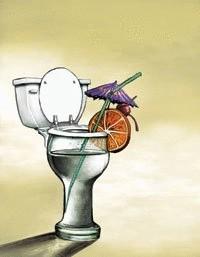
No Commission on environmental quality Texas, neither the Department of environmental protection, the United States has not yet developed regulations for reuse of water for drinking. Texas Committee for the improvement of water supply hired the engineering company for the development of the user.
Medical experts are confident in the safety of drinking reused wastewater that has passed through the necessary cleaning procedure — says Jeff Mosher, Executive Director of the California non-profit organization national research Institute of water (National Water Research Institute). Its taste is unlikely to differ from the taste of ordinary drinking water.
However, critics sometimes calling the waste water purified to the quality of drinking — “toilet to tap,” still in doubt.
“I was faced with people who are washed down the drain the incredible diversity of chemicals,” says Christopher Stephens, a rheumatologist in Brownwood. He believes that the project is re-using water pushed through very quickly, while the city should take more aggressive measures to protect the environment.
Authorities in Wichita falls, waiting for the approval of the project by the Commission on environmental quality Texas. The city already recycles brackish water of the nearby lake to drinking water standards, so much of the infrastructure exists. The pipeline, which will connect the station at the wastewater treatment station potable water will cost about $9 million, and the city plans to continue to expand the recycling system, says Daniel Nix, head of utilities in Wichita falls.
Rainfall in above average volume can stabilize urban water supply from surface waters. But "you can't go and buy a rain," says Nix.
Source: /users/104
“When we first discussed the projects secondary water use in the late 90s, it may have been a lot of comments,” says mayor Glenn Barham. Now, in drought conditions, he said, people “realized that we have to take steps to stabilize our water supply”.

Wichita falls is one of several cities in Texas, educational projects secondary use of water. This spring, the station for $14 million in the town of big spring in West Texas will recycle treated sewage water into drinking water and distribute about 2 million gallons (7.5 million liters) of produced water on the territory of the Metropolitan area of Midland-Odessa. Brownwood recently received permission for construction of a plant for the recycling from the Commission on environmental quality Texas. Abilene and Lubbock are in the early stage of this technology.
“People are paying very close attention to what is happening in Texas with the initiatives on the reuse of water for drinking,” says Zachary Dorsey, a spokesman WateReuse Association.
In the process of cleaning wastewater to drinking quality, the treated wastewater goes through additional chemical and biological treatments, advanced filtering, then mixed with a standard potable water and subjected to the usual purification procedure.
Plant in big spring will be the first of its kind in the country. El Paso and orange County have also become pioneers in projects for secondary water use, but their treated waste water going into the aquifers before pumping for further processing. In big spring phase of aquifers is missing.

No Commission on environmental quality Texas, neither the Department of environmental protection, the United States has not yet developed regulations for reuse of water for drinking. Texas Committee for the improvement of water supply hired the engineering company for the development of the user.
Medical experts are confident in the safety of drinking reused wastewater that has passed through the necessary cleaning procedure — says Jeff Mosher, Executive Director of the California non-profit organization national research Institute of water (National Water Research Institute). Its taste is unlikely to differ from the taste of ordinary drinking water.
However, critics sometimes calling the waste water purified to the quality of drinking — “toilet to tap,” still in doubt.
“I was faced with people who are washed down the drain the incredible diversity of chemicals,” says Christopher Stephens, a rheumatologist in Brownwood. He believes that the project is re-using water pushed through very quickly, while the city should take more aggressive measures to protect the environment.
Authorities in Wichita falls, waiting for the approval of the project by the Commission on environmental quality Texas. The city already recycles brackish water of the nearby lake to drinking water standards, so much of the infrastructure exists. The pipeline, which will connect the station at the wastewater treatment station potable water will cost about $9 million, and the city plans to continue to expand the recycling system, says Daniel Nix, head of utilities in Wichita falls.
Rainfall in above average volume can stabilize urban water supply from surface waters. But "you can't go and buy a rain," says Nix.
Source: /users/104
Why there are moles?
Beijing covered in smog, according to the degree of contamination exceeding all applicable



